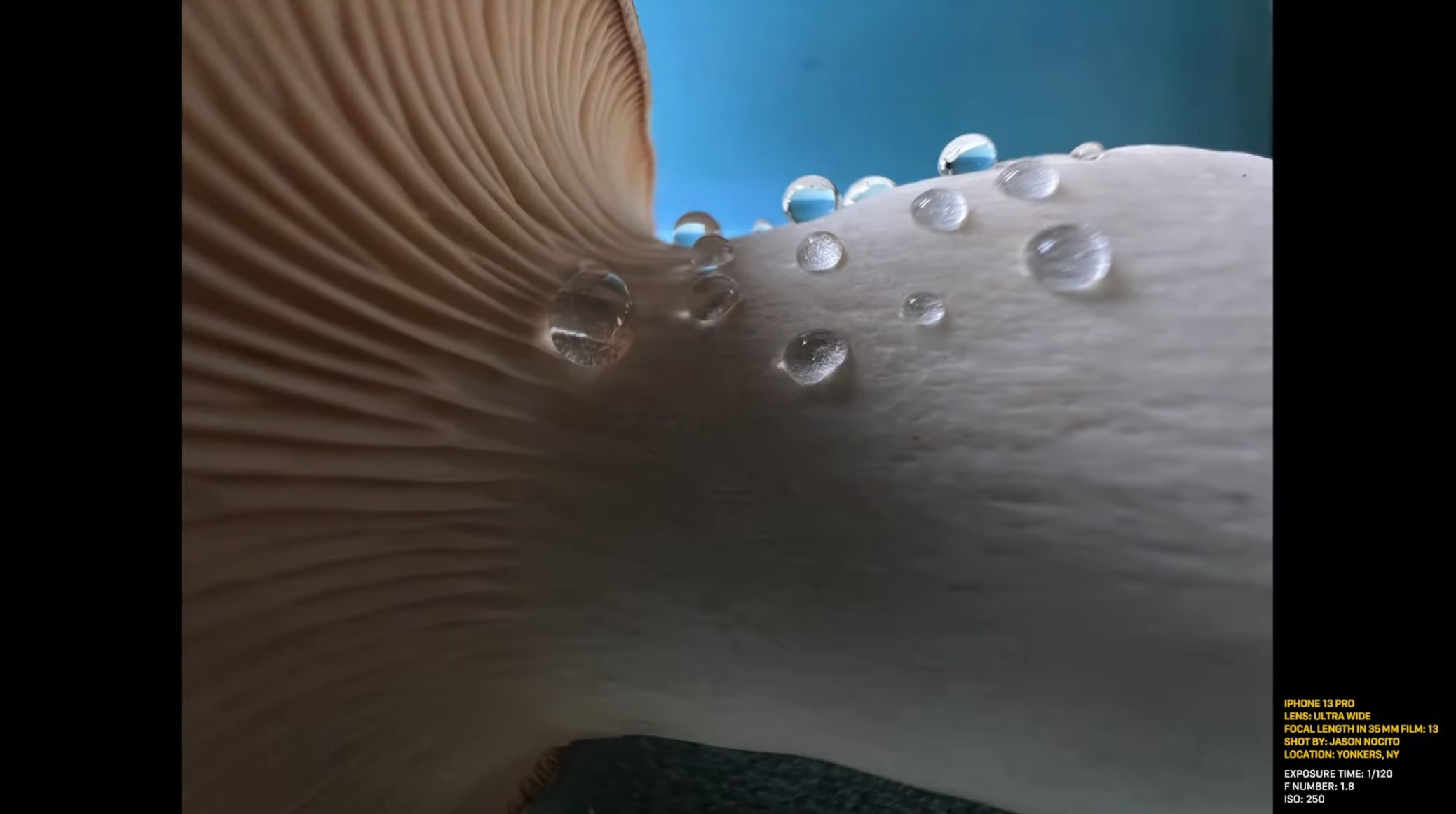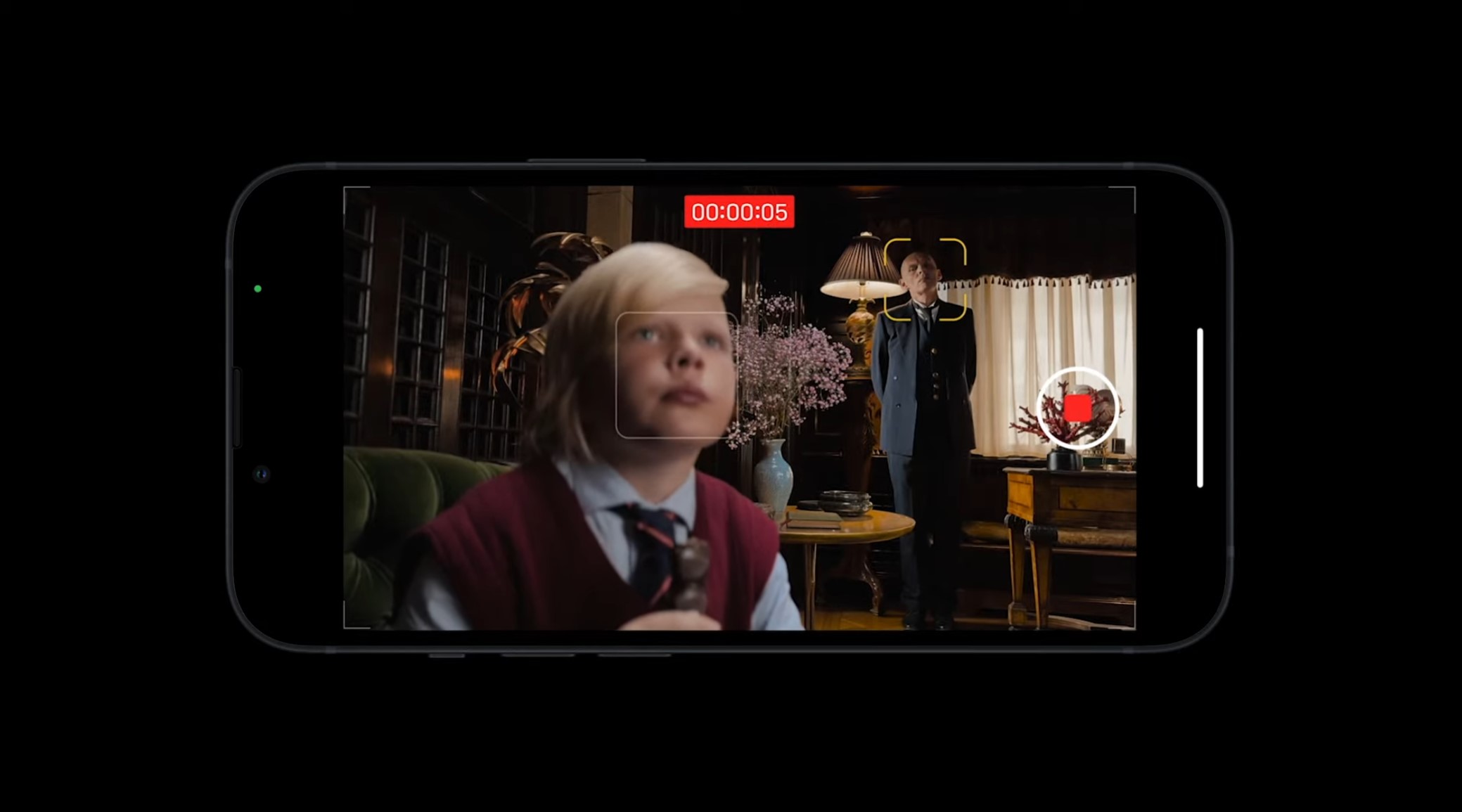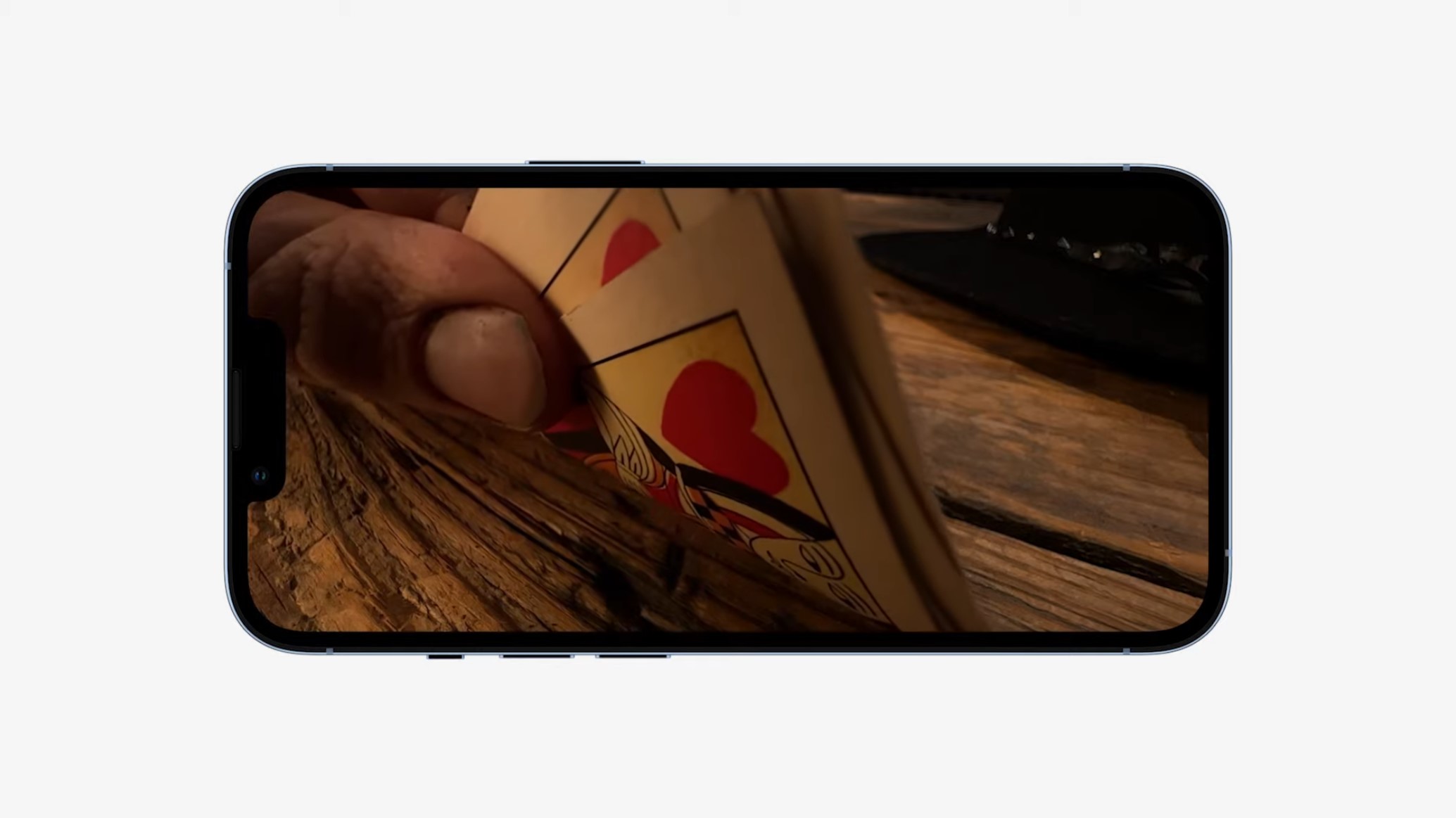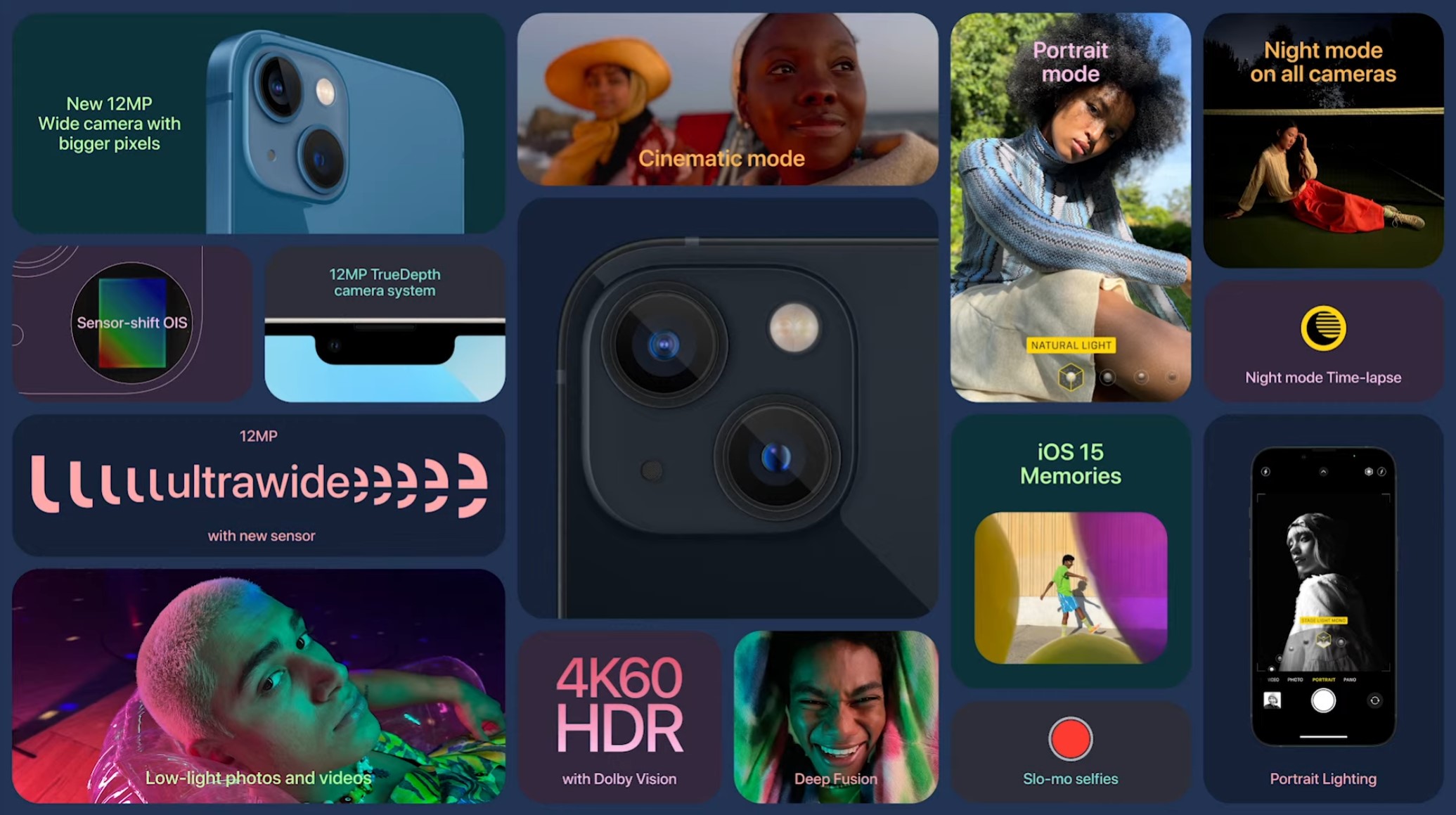iPhone 13 cameras: Here are the biggest upgrades for the new iPhones
Here's how Apple's made iPhone photos and videos better for the iPhone 13

Apple's iPhone 13 announcement has revealed several new features and upgrades, including one of the most crucial features of any phone: the cameras.
Each camera on the back of the iPhone 13 series has been given a refresh, with the iPhone 13 Pro and iPhone 13 Pro Max getting a few extra tricks as befits their Pro status. The most exciting news for all four new iPhones is Cinematic Mode for video, which automatically tracks your subject and switches focus on the fly, but there's lot of other new camera features and upgrades to explore.
- Get the full lowdown on the iPhone 13
- Also announced today — the iPad mini 6
- Plus: The under-display camera revolution is off to a crappy start
The A15 Bionic chipset that runs the iPhone 13 series boasts a new image signal processor, and a new video encoder and decoder. This will help with the computational photography of the iPhone. For example, Smart HDR 4 makes for more realistic lighting, contrast and detail in images, even for groups of people or in unusual light conditions.
We've broken down all the new features Apple's announced for the iPhone 13 series' cameras. Read on to see what they all are, and to learn how they'll make your photos and videos better than ever before.
Main (wide) camera: bigger, brighter and more stable
Starting with the main rear camera, Apple's increased the size of the pixels on the iPhone 13, and 13 mini to 1.7 microns (µm), the same size as the sensor on the iPhone 12 Pro Max. Larger pixels means more light information can be captured — up to 47% more than before according to Apple — making for brighter, more vivid images.
The iPhone 13 Pro models get even bigger pixels again for their main cameras, up to 1.9 µm. It's also been given a new wider f/1.5 aperture, to maximize the light that the sensor can capture.
Apple is also adding sensor-shift stabilization to the main camera on all models, after introducing this feature last year on the iPhone 12 Pro Max. Sensor-shift stabilization allows the sensor to move instead of the camera's lens. It overall makes your images less blurry and your videos look smoother, so having it on even the cheapest new iPhone is a big bonus.
Get instant access to breaking news, the hottest reviews, great deals and helpful tips.
Ultrawide camera: a refreshed sensor with Pro macro

The ultrawide camera on the iPhone 13 series has been given a new sensor to help it work better in the dark. That ties in with Apple's announcement that night mode now works on every camera, rather than just the main and selfie cameras. Now you won't have to choose between seeing the subject in low-light and trying to fit it all into frame.
For the Pro models, the ultrawide camera has been upgraded to a 6 element lens, and also has a wider f/1.8 aperture. Adding more elements to a lens can help correct distortion and aberrations in images, which are more apparent in ultrawide shots; while the wider aperture will increase the brightness of your final images.
The iPhone 13 Pro and 13 Pro Max also have access to autofocus with the ultrawide lens for the first time. Just like with the main sensor, this would make it easier to keep your camera trained on a subject.
These upgrades are also what enables the new macro photography ability on the iPhone 13 Pro models. Apple claims you'll be able to take close-ups as near as 2cm from your subject, which sounds great for anyone with a love of capturing finer details or small objects.
Telephoto camera: get a little closer on iPhone 13 Pro
The iPhone 13 Pro and 13 Pro Max models have both received boosts to their telephoto sensors' magnifications. Both are now capable of up to 3x optical zoom, an increase from 2x on the iPhone 12 Pro and from 2.5x on the iPhone 12 Pro Max. This still lags behind rival phones, which can manage 5x optical zoom or even higher, but will still make for easier and clearer shots of far-away subjects.
Cinematic mode: fancy focusing and higher quality video
Smartphone videographers will be very interested in Apple's new Cinematic video mode, available on all four iPhone 13 models.

Apple showed off some classy-looking footage in its presentation, showing how the mode can manage automatic movie-style focus racks (a quick change in focus from background to foreground or vice versa), or let the user lock onto a target themselves. If you're concerned about ultimate quality, you can record video in Dolby Vision HDR at up to 4K and 30fps on any of the cameras, and see it in the preview window as you record.
It should let you take some dramatic-looking clips, similar to what you can with photo portrait mode already.

Speaking of portrait mode, both portrait photos and Cinematic mode video can have the level of bokeh (background blur) altered after shooting within the Photos or iMovie app respectively. This editing option will be coming to the macOS version of iMovie and Final Cut Pro later, too. It sounds great for the indecisive among us who can't figure out which level they like best, or the meticulous users who want to achieve their artistic vision.
Photographic Styles: more than just a filter
For users who really want to customize their shots, Apple has a new Photographic Styles option accessible from the main screen of the camera app on all four iPhone 13 models. This offers pre-set effects that appear in real time on the screen, letting you essentially find the perfect filter as you shoot. These are cusomizable too if you aren't quite happy with the quartet of options Apple provides.

ProRes: coming soon to an iPhone 13 Pro near you

The other big video feature, but one that isn't coming until later, is ProRes. This is a commonly used professional-level video format that offers greater color accuracy, less compression, and retains more metadata from the original recording, letting editors make more drastic changes in post-production. Once it launches, it will be available on the iPhone 13 Pro and iPhone 13 Pro Max.

Richard is based in London, covering news, reviews and how-tos for phones, tablets, gaming, and whatever else people need advice on. Following on from his MA in Magazine Journalism at the University of Sheffield, he's also written for WIRED U.K., The Register and Creative Bloq. When not at work, he's likely thinking about how to brew the perfect cup of specialty coffee.
